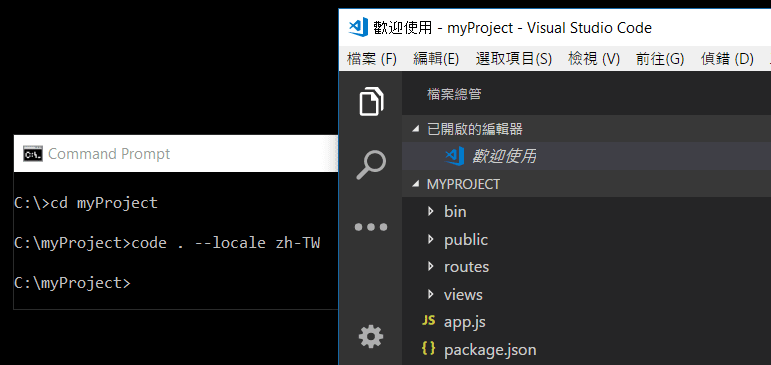Nov 04, 2016 VSCode Version: 1.7.1 OS Version: Win 10 Pro Add an option to set environment variables before starting the terminal. Something like: 'terminal.integrated.envVars.windows': 'DEBUG=1', 'LANG=C', Or maybe you want to split variable and v.
- Mac Launch App From Terminal With Environment Variables Pdf
- Mac Launch App From Terminal With Environment Variables Free
- Jun 14, 2020 Environment Variables (Mac / Linux / Server only, and does not include shell variables) Current Working Directory (Mac / Linux / Server only) The persisted terminal data is stored within a folder named console06 (ends with zero-six ), beneath the project folder's.Rproj.user, (or for no-project, under /.rstudio-desktop, /.rstudio, or%appdata.
- An Applescript wrapper around eclipse.command makes it look like an app and prevents the terminal window appearing. Unfortunately I now get a dock icon for the applescript and one for eclipse so can still keep the bare eclipse on the dock. The next time you launch Eclipse.app from the Dock or from the Finder the environment variables should.
The Terminal is generally reserved as an environment for advanced configuration of your Mac, but there are those who resort to it on a regular basis and use it in conjunction with OS X’s graphical interface to make optimal use of the system. If you do so, then you might find yourself periodically wanting to launch an application, either directly from the command line, or from an automated action like a script. In addition, you can use this feature to launch multiple instances of a standard OS X program, or run it as a different user, such as root, which can give you access to the system in ways you might otherwise not have.
The classic way
As with general Terminal syntax, you can launch an executable script or binary file from the Terminal by simply entering its full path. However, to do so for an OS X app with a graphical interface, you will need to specify the app’s executable file within the application package. In most cases, this will be a subdirectory called /Contents/MacOS/ that contains an executable with the same name as the app. For instance, opening TextEdit in the Applications folder will require you run the following command:
This can be useful for troubleshooting problems with the program, since you will see console output (errors, warnings, and sometimes other activity) output directly to the Terminal window hosting the program, as opposed to having to use the Console utility.
If you would like to run the app as a different user (e.g., the root account), then you can first switch user accounts in the Terminal with the “su” command, or use “sudo” before specifying the path to the Mac OS application, and this will launch the program as root (note that this might not always work):
Mac Launch App From Terminal With Environment Variables Pdf

Keep in mind that launching a program in this way will launch a new instance of it, so if you have TextEdit already open, then you will see another TextEdit program open next to it. This has its benefits in some circumstances, but can interfere with services like Apple’s Resume feature (ie, it may overwrite your current window configuration so when TextEdit is quit, current window positions will not be saved and then restored when the program is next opened).
In addition, keep in mind that when opened in this manner, the Terminal window will be hosting the program, so it must remain open while the program is running—if you close the Terminal window, you will force-quit the program you have opened.
Using the “open” command
One of OS X’s unique Terminal commands is the “open” command that allows you to handle files, programs, and URLs in sometimes unique ways. The benefit of this program is, similar to using the Terminal for directly launching an app in the “classic” way; however, it does have two benefits. First, it is easier to use, and second, it does not require the Terminal remain open:
In this command, replace “appname” with the name of your desired app, and it should launch. Note that by default this command will, similar to the OS X graphical environment, only open one instance of an app, so if the program is already open then this command will switch to it. However, you can use this command to open another instance of the program, by adding the “-n” flag:
Keep in mind that as with the classic approach, multiple instances of an application running at the same time under the same user account may have odd consequences with supporting services that the application uses; however, for simple programs and utilities it can be useful to run another instance as root, in order to overcome permissions limitations with your current user account. Also consider apps like the Calculator, where it might be useful to have more than one calculation going at a time.
Mac Launch App From Terminal With Environment Variables Free
With the command run multiple times, you will open multiple instances of the program.